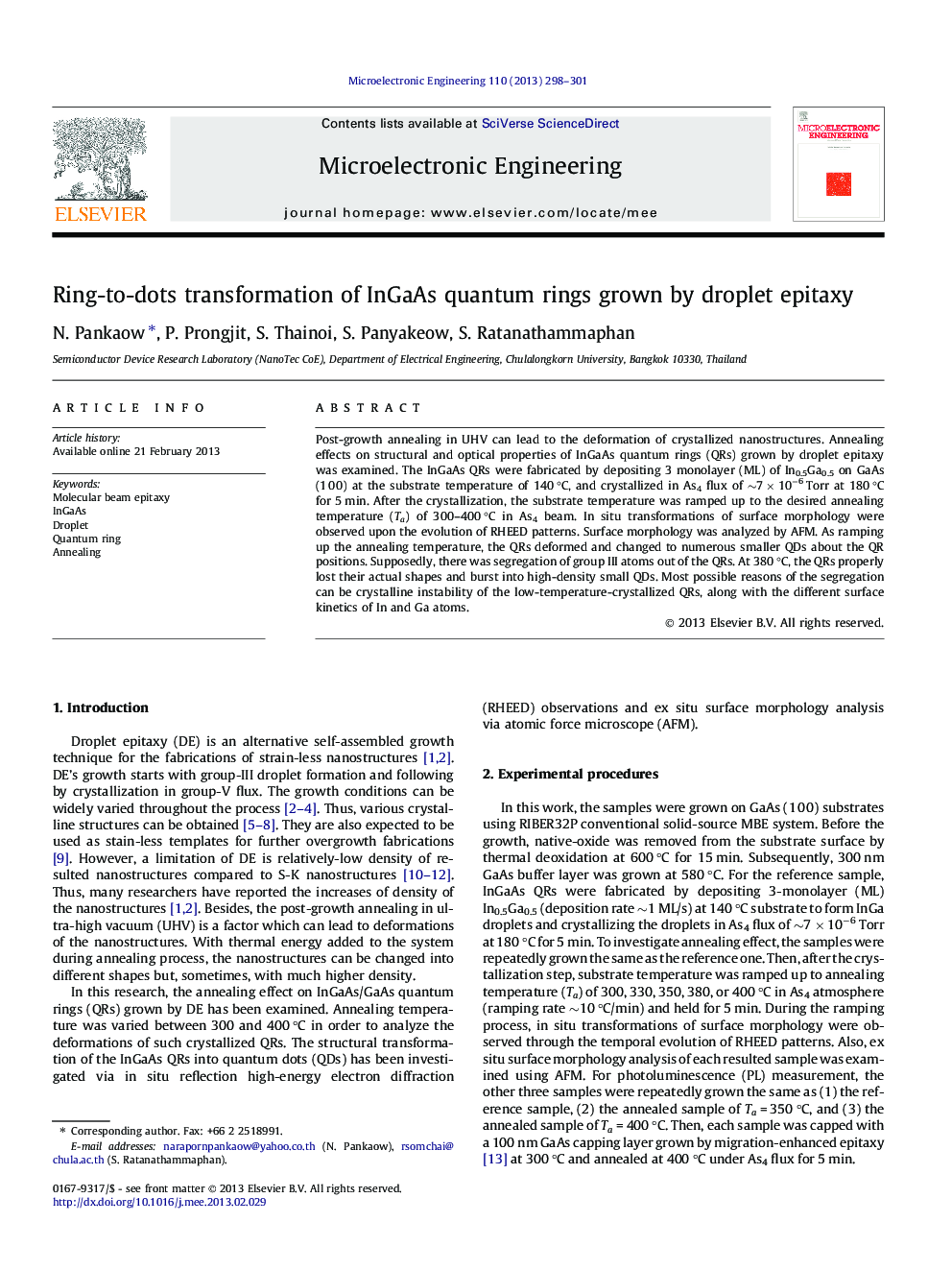| Article ID | Journal | Published Year | Pages | File Type |
|---|---|---|---|---|
| 544281 | Microelectronic Engineering | 2013 | 4 Pages |
Post-growth annealing in UHV can lead to the deformation of crystallized nanostructures. Annealing effects on structural and optical properties of InGaAs quantum rings (QRs) grown by droplet epitaxy was examined. The InGaAs QRs were fabricated by depositing 3 monolayer (ML) of In0.5Ga0.5 on GaAs (1 0 0) at the substrate temperature of 140 °C, and crystallized in As4 flux of ∼7 × 10−6 Torr at 180 °C for 5 min. After the crystallization, the substrate temperature was ramped up to the desired annealing temperature (Ta) of 300–400 °C in As4 beam. In situ transformations of surface morphology were observed upon the evolution of RHEED patterns. Surface morphology was analyzed by AFM. As ramping up the annealing temperature, the QRs deformed and changed to numerous smaller QDs about the QR positions. Supposedly, there was segregation of group III atoms out of the QRs. At 380 °C, the QRs properly lost their actual shapes and burst into high-density small QDs. Most possible reasons of the segregation can be crystalline instability of the low-temperature-crystallized QRs, along with the different surface kinetics of In and Ga atoms.
Graphical abstractFigure optionsDownload full-size imageDownload as PowerPoint slideHighlights► Post-growth annealing in UHV leads to the deformation of InGaAs QRs grown by droplet epitaxy. ► After the crystallization, the QRs was annealed at the annealing temperature of 300–400 °C in As4. ► Transformation of surface morphology is analyzed by AFM and the evolution of RHEED patterns. ► At higher annealing temperature of 350 °C, the QRs transform into numerous smaller QDs. ► The transformation is supposedly resulted from the segregation of group III atoms out of the QRs.
